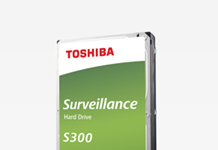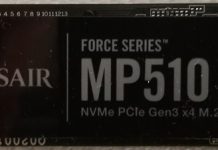|
|
Review: Silicon |
Silicon Power was kind enough to send us a
16GB UHS-1 Class 10 SDHC card for review. What makes this card special is its
UHS capability, allowing far greater read and write transfer speeds than possible
with SD cards lacking this capability. A typical Class 10 rated card has a bus
speed of up to 25MB/s, while UHS-1 rated cards have a bus speed of up to
104MB/s.
The vast majority of modern digital cameras
use SD cards and with many professional level DSLR cameras now using SD cards,
speed is a very important factor, for sports and press photographers,
especially those who need to take many photos in rapid succession. As this
card has a Class 10 rating, this means that it must sustain a minimum write
speed of 10MB/s even in a fragmented state. With a camera that supports UHS,
this card claims to deliver up to 45MB/s write speed. So in this review, we
will focus our testing on write performance and throughput. This includes
tests with a clean card and filled to capacity, with random photos removed to
introduce free space fragmentation.
Silicon Power Company Information
Silicon Power is a well known manufacturer
of memory products, including USB flash drives, portable hard disks, flash
memory cards, computer RAM and Solid State Disks.
The company was founded in 2003 with its
headquarters in Taipei, Taiwan and claims, in less than a decade, to be the world's
leading manufacturer of flash memory cards, USB flash drives, card readers, DRAM
modules, solid state disks, and portable hard drives. Their products are
marketed around the world, serving end users in over 100 countries.
Further information on the Silicon Power
Company Profile can be found on
their website.
Retail packaging
The SDHC card was shipped to us in shrink-wrapped
retail packaging, as shown in the following images:
![]()
Front
![]()
Back
What’s inside the packaging?
Actually, there is nothing but the SDHC
card inside, held in place by the rigid plastic packaging. No storage case,
card holder, or instruction manual was included, so unless one plans on keeping
this permanently stored in the camera, we recommend getting an SD case/holder
to protect the card.
The QR code at the front brings up a mobile
webpage with further information on Silicon Power products and how to enter its
competition:
![]()
Size Comparison
Most users of SD cards don’t give a second
thought about the storage density of the cards. As long as the card stores
their photos and performs to their expectations, that’s all they care about. It
is not until we started looking at the actual card that we realise just how
much information is being crammed into this postage stamp sized item. It certainly
makes a DVD look physically huge in comparison and it’s worth noting that this
is now the lowest capacity SDHC card available from Silicon Power. The
capacities range up to 128GB for Silicon Power’s Elite SDXC series, the same
capacity as the largest capacity Blu-ray disc available, which is physically still
the same clumsy size as a DVD.
![]()
If it was not for the high cost of NAND
flash, recordable optical media for data storage would likely be history.
Product Specifications
The following specifications are sourced
from the Silicon Power website:
- Form factor: SDHC (16/32 GB)
- Card dimensions: 24 mm x 32 mm x 2.1 mm
- Operating temperature: 0ºC to 70 ºC
- Storage temperature: -40ºC to 85ºC
- Compatible with SDHC UHS-1 enabled host
devices. - Lifetime Warranty
- Compatible with SDHC enabled host
devices; not compatible with SD devices and SD readers. - Some of the listed capacity on a Flash
storage device is used for formatting and other functions and thus is not
available for data storage. As such, the actual available capacity for
data storage is less than what is listed on the products.
Now let’s head to the next page where we
will look at our test PC and testing procedures…
















